Late on Father’s Day, my lovely first wife remembered she had forgotten to give me one of my presents:
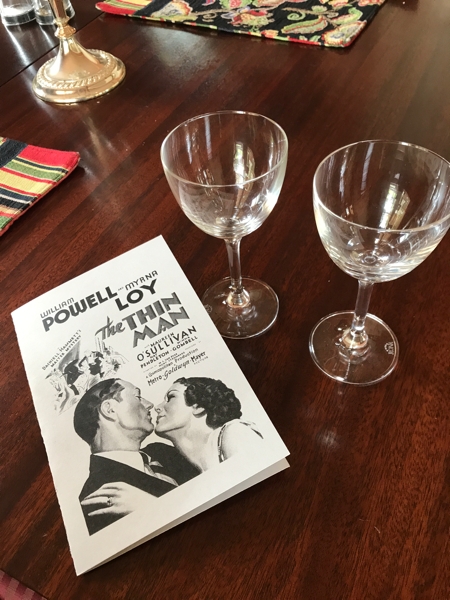
These are called “Nick & Nora” glasses, after the main characters in the Thin Man movie series from the 1930s. Nick and Nora were wealthy socialites who solved crimes while they drank and quipped their way through Manhattan. I had expressed a wish for a set of these glasses to round out my extensive glassware collection.
Of course, I’m out of room to store my glassware, and in trying to figure out a way to make room for my new acquisitions, I had some thoughts.
Most of my cocktail ware is stored in the bar in the living room.
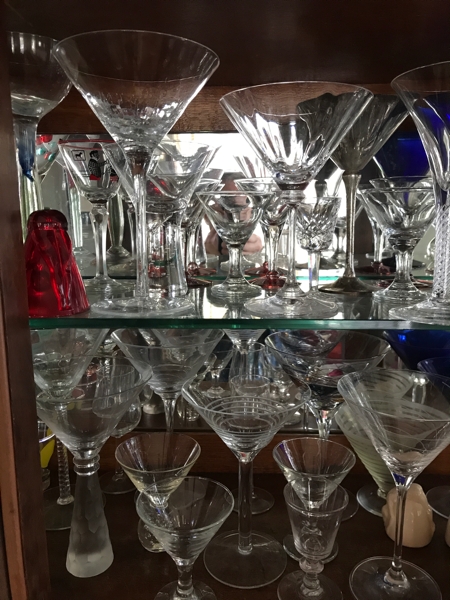
As you can see, a lot of it is from the early days of the Great Cocktail Revival: big old 10 oz things meant for swilling Cosmopolitans and French Martinis. I would be loath to part with most of those glasses because I collected them deliberately. However, very few are anything but mass produced. The one or two handblown or handcrafted ones I could keep on display while boxing up the rest of them to be discovered by my heirs and assigns at some point in the future.
Assessing my stemware was not the only stroll down memory lane, however.
Yesterday was National Martini Day, and by martini they mean an honest-to-Cthulhu mixture of gin and dry vermouth, not any of the abominations that were listed in menus under the heading MARTINIS back in the day. Whenever I ordered a martini and the server asked, “With gin?” I would simply raise my eyebrows and say, “Yes. A martini.”
(I will allow a vodka martini, but you have to call it that.)
The only real argument you can have over a martini is the ratio of gin to vermouth. Garnishment—olive or lemon twist—is simply up to you. You might hold forth for one gin over another (dry, Old Tom, Plymouth, etc.), but the serious question is how much vermouth are you going to sully the gin with?
Older recipes may call for a 2:1 ratio of gin to vermouth, and I have seen “original” recipes call for 1:1. My personal preference is similar to Winston Churchill’s, which was to hold up the bottle of vermouth and allow the sun to pass through it before it kisses the gin; the drier the better. I have a little atomizer with which I can either mist the inside of the glass or the surface of the gin once poured, and that is more than sufficient vermouth for me.
However, in the spirit of the holiday, I mixed a 3:1 martini.
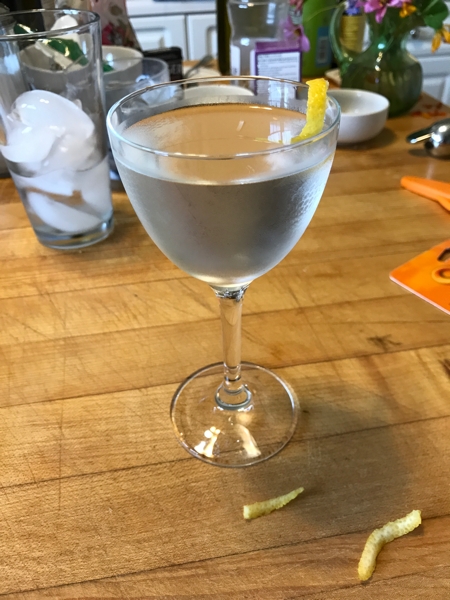
I drank about half of it before deciding that I would go back to Vintage Spirits & Forgotten Cocktails and revisit some of my favorites from that book in the spirit of the Nick and Nora glass.
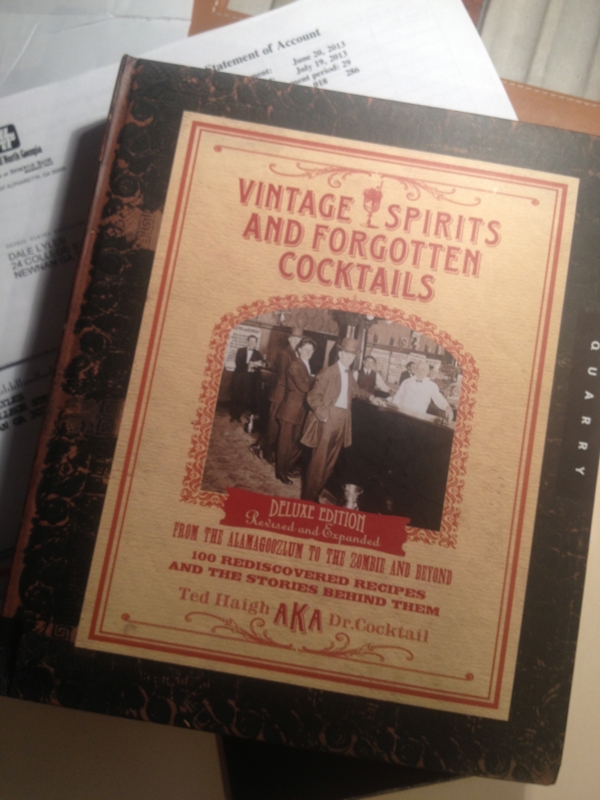
Here is a sad truth: many of the cocktails I’d marked Delicious! are simply no longer delicious to me. I made a Doctor Cocktail (rum, Swedish Punsch, lime juice) and drank only half.
I made a Pegu Club, though using the original proportions instead of the one in VS&FG.
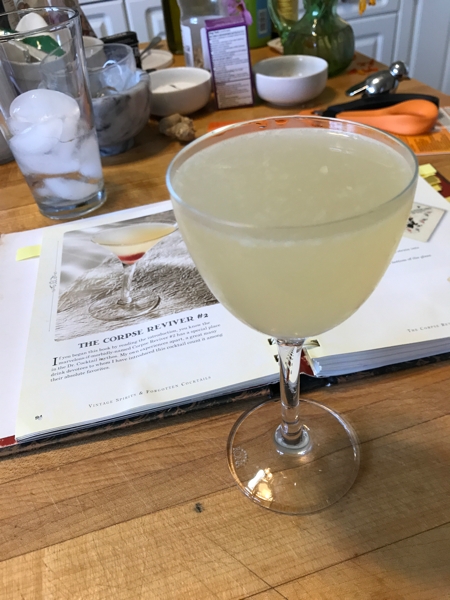
And it was not bad. However, my taste these days is for darker, boozier drinks: the Smoky Topaz or Smoky Quartz, for example. Or bitter drinks like the Negroni or Best Friend.
Just remember that if you come for cocktails and I ask what you would like, and you say, “Oh whatever you’re mixing these days.” If you want a citrusy/sweet/lower ABV cocktail, you should probably express that preference. Otherwise, you’re going to be drinking pure booze from the dark side. With bitters.
One last thing:
Nick Charles: The important thing is the rhythm. Always have rhythm in your shaking. Now a Manhattan you shake to fox-trot time, a Bronx to two-step time, a dry martini you always shake to waltz time.
Nick, of course, is wrong. A Manhattan, a Bronx, and a martini, having no fruit juice, are always stirred, not shaken.
“Rhythm”
Always have it.